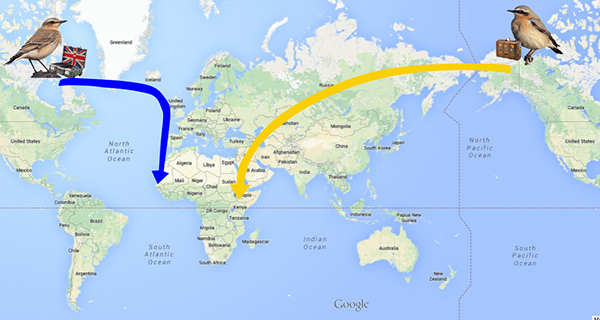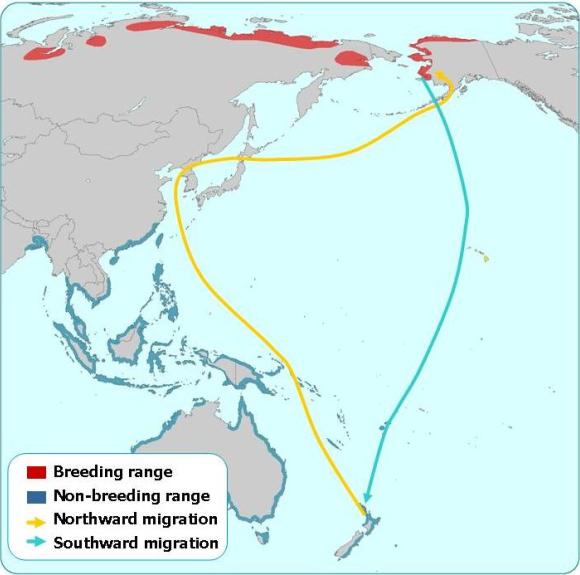Migration Marvels Part 4: Record breakers
There are few more awe-inspiring wildlife experiences than watching migrating birds pass by, marvelling at the distances they’ve travelled and how far they still have to go. I have been lucky enough to see large scale migration spectacles in countries like Georgia and Morocco – an experience I would highly recommend to anyone. Whilst these sights are amazing and inspiring, they only tell us a small part of the wider picture. With the advancement of technology, we are finally seeing the whole picture and it’s more incredible than we could have imagined.
The story of our Nightjars is an amazing one in which they cover 10,000+ miles in their annual journey from the Thames Basin Heaths to the Democratic Republic of Congo and back again. But this pales in comparison to journeys undertaken by other species. The Arctic Tern for example, a cousin of the Common Tern, which has this year bred on Boldemere Lake on Ockham Common, will cover up to 60,000 miles on its journey from Europe to Antarctica! For context the circumference of the Earth is 25,000 miles! These birds are long lived and in their lifetime could cover more than 1.8 million miles, the equivalent of four return journeys to the Moon – astonishing!! Bar-headed Geese, a native to Central Asia, with a small feral population in the UK, hold the record for the highest fliers on migration. Legend has it that they have been spotted flying over the behemoth that is Everest. That’s nearly 30,000ft! Although this is unverified, they have been recorded flying at a dizzying height of 24,000ft, an altitude at which there is less than 10% of the oxygen found at sea level and it’s still unknown how they manage to achieve such a feat.
The record for the longest migration of any song bird goes to the Northern Wheatear, a bird I have previously mentioned, and some of you will be able to spot on the Special Protection Area over the coming weeks. The birds that breed in Canada and Greenland will migrate across the Atlantic, possibly stopping in the UK, before continuing on to Europe and Africa. But the birds in Alaska will take the long way round, going into Russia. It will take 3 months to reach their wintering grounds and around the same time to get back again, an epic journey of 18,000 miles! The exertions of migration usually mean birds take their time stopping at vital points along the way, Nightjars for example won’t actually reach the wintering grounds until December, nearly four months after setting off. Great Snipes though will complete their migration, not only in one go, but in a remarkably quick time, completing the 4,200 mile journey from the West Coast of Africa to Scandinavia in 48 hours! That is an amazing average speed of 50mph, non-stop for 2 days, reaching their breeding grounds, understandably, exhausted. Although this is amazing, again it’s beaten by an even more durable species – the Bar-tailed Godwit. This species can be seen here in the UK in winter or on passage to a more far-flung destination. Birds breeding in Alaska will make a non-stop journey all the way to New Zealand, a mind boggling 9 day, 7000 mile journey without food, water or sleep. How they do this is still unknown, but maybe one day we will!
Warden Conor

Migration routes of the Wheatear. Source: www.allaboutbirds.org.

Journeys of the Bar-tailed Godwit. Source: PRBO Conservation Science and USGS Alaska Science Center.
